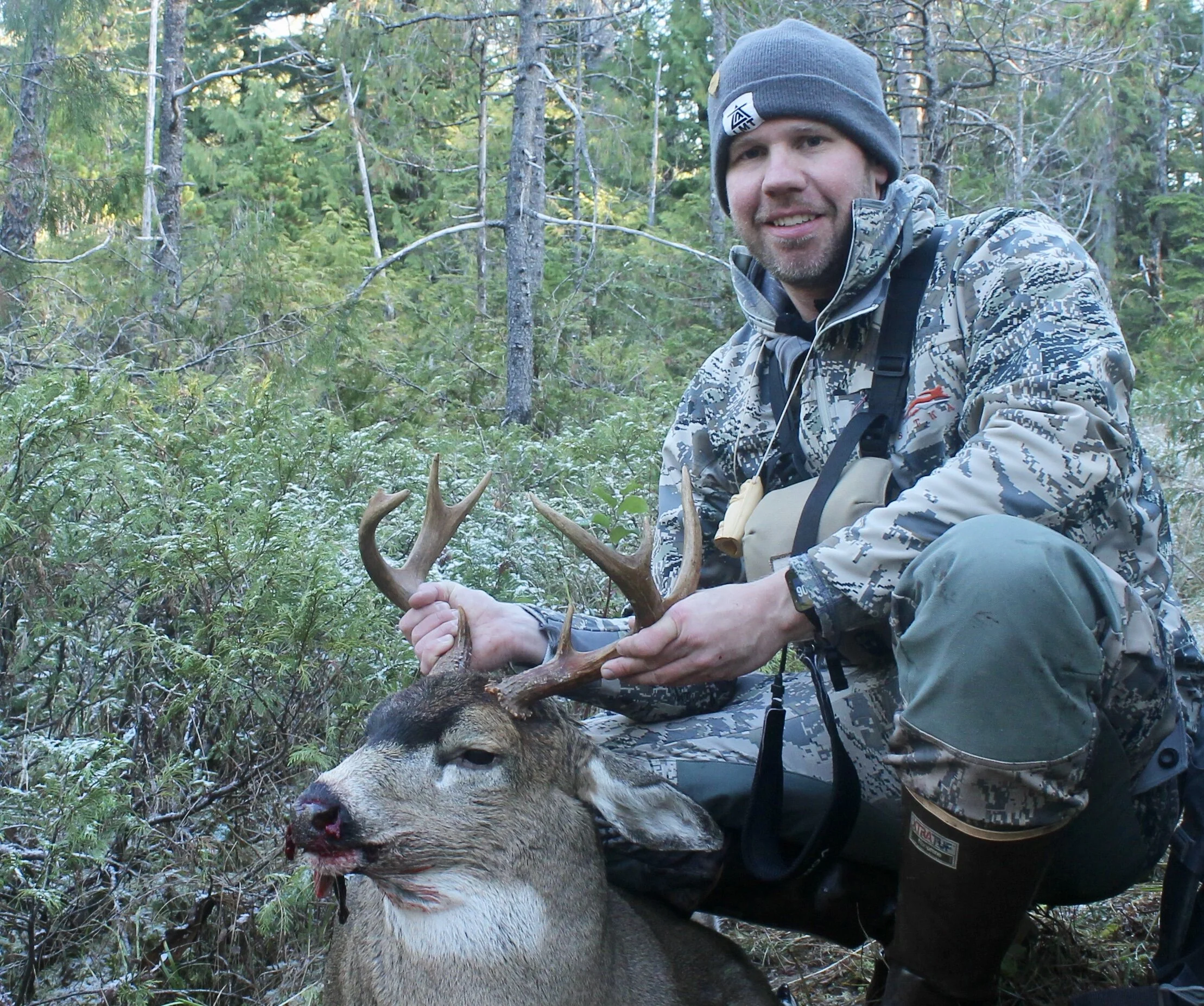Strategies for hunting Sitka Blacktail deer
It is tough for many hunters to hammer down their favorite way to hunt Sitka blacktail in Southeast Alaska. While I love alpine, I certainly don’t hate the rut. It is a very close second place. I even like when the alpine season stretches into September and those cooler days in the mountains are every bit as magical as the opener on Aug. 1. I guess it doesn’t really matter. As any hunter will tell you, it’s not always about the When, it’s just about the What.
Tips for Alpine Hunting - August - September
Camp high on a mountain, either at the timberline or in a fold of texture near the top. It really depends on preference and side of the mountain. Smaller alpine areas might not tolerate a lot of movement and smell in the days leading up to the opener. On smaller mountains like this, I like to be within 20 minutes of the top, but up and out of the timber.
Be out of the tent by sun up. On hot days there is a very small window before the bucks bed. The show could be over by as early as 7 a.m. which gives you two and a half hours to make something happen.
Be ready. Don’t just assume the deer will be on the other side or at the top. One of the biggest bucks I have ever seen was just around the corner from our tents. It surprised me. I wasn’t ready and didn’t even get a shot. A year later there was a forkie bedded 50 yards from me. I shot him without putting my boots on.
If you are from the Lower 48 and are used to hunting over water, water maters here, but don’t sit on a watering hole. I have never seen a deer take a drink. The moisture from the dew and rain provides deer with all the water they could want.
Weather and food availability will push bucks off the alpine eventually, but bucks can be taken up top in September. A good friend of mine took a great buck in 2020 in mid-September. There was plenty of feed so the bucks stayed put. A week later I went up a different mountain with a friend and we didn’t see any bucks, but there was plenty of food, so they were probably pushed out by hunters or wolves.
Rubber is dry. Lightweight and breathable just means you will get wet.
The alpine is incredibly slick and potentially dangerous. I have Black Diamond trekking poles and Kahtoola crampons. I don’t use the crampons often because I always have the trekking poles, but there are certain areas I would not go to without them. It is simply too steep and too slick, especially with a heavy pack.
Tips for Pre-Rut and Rut - October - November
Late September and early October can be maddeningly unproductive. The deer are still there, but they are not as active or responsive to calls. Pressure starts to dial up once someone calls something in, usually the last week of October, but it could be sooner. Then the hunters descend.
Halloween has always been a target date of mine and I have been successful around that date, or at least had good quality chances. This may vary depending on where you are hunting. Prince of Wales, Revilla, Gravina, Cleveland Peninsula, Wrangell Island tend to have similar starts but it really doesn’t matter. You can’t get one if you’re not out.
With increased pressure comes the debate about how much to call and how to call. In high traffic areas, the bucks that may have responded to a call could be dead or educated. With this in mind I focus on staying quiet and hunting well first, rather than depend on the call as a magic wand.
Pay close attention to the edges of muskegs rather than tromp right through.
Use creeks to cover sound and slowly approach muskegs.




